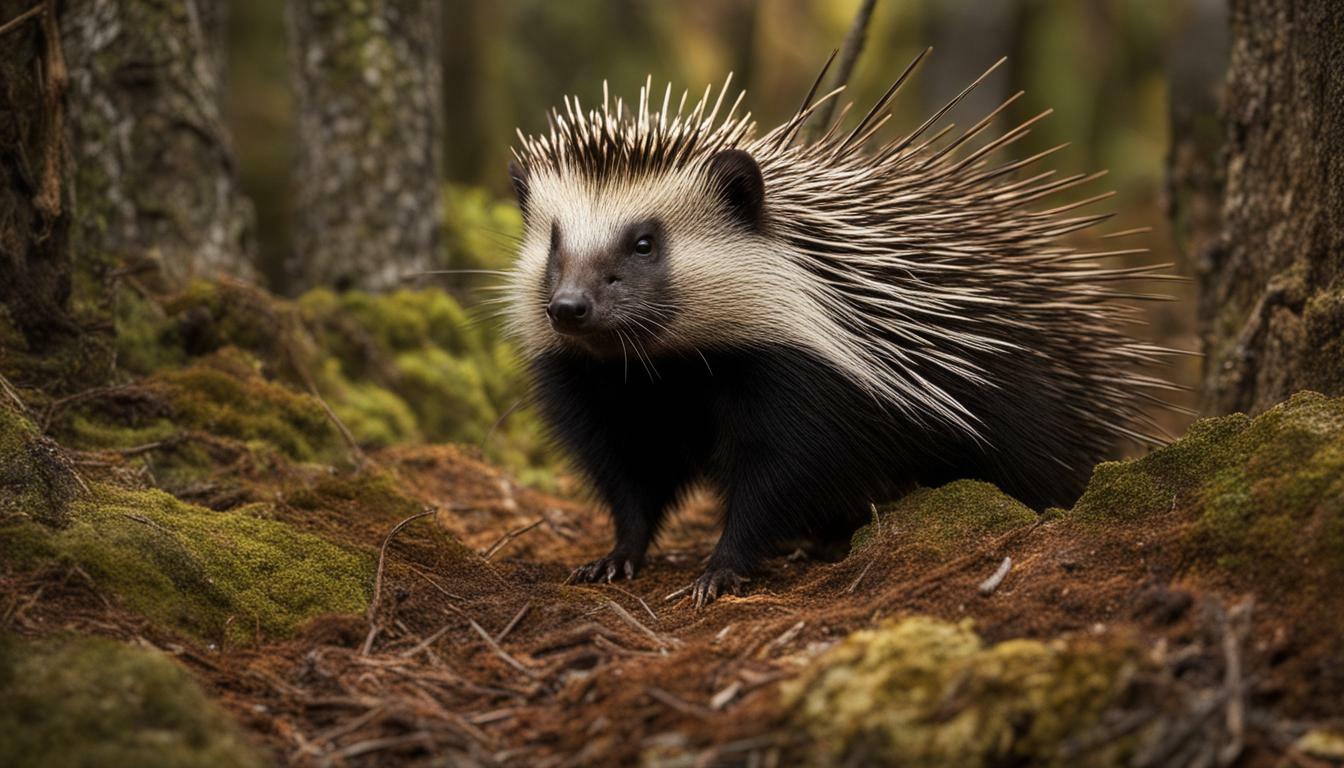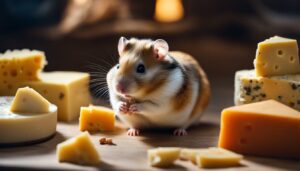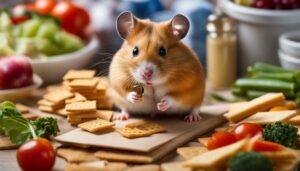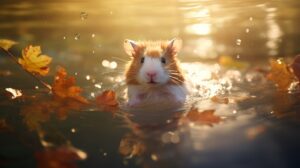Porcupines are intriguing creatures, but do they pose a threat to humans? While they are generally peaceful and avoid contact with humans, porcupines may become aggressive and attack if they feel threatened or cornered. Understanding their behavior and defense mechanisms is crucial for ensuring human safety in their presence.
Key Takeaways:
- Porcupines are generally peaceful but may attack if they feel threatened.
- Their primary defense is their quills, which can cause painful injuries and infections.
- Seek immediate medical or veterinary treatment if quilled by a porcupine.
- Porcupines can be dangerous to small pets, such as cats and dogs, due to the difficulty and pain of removing quills.
- Porcupine quills can carry bacteria and diseases like rabies, so it’s essential to handle injuries properly.
Understanding Porcupine Behavior
To understand the likelihood of porcupines attacking humans, it’s essential to first grasp their behavior patterns.
Porcupines are generally peaceful creatures and typically avoid contact with humans. They prefer to retreat or climb trees when confronted, using their sharp quills as a defense mechanism. However, if a porcupine feels threatened or cornered, it may display aggressive behavior and potentially attack.
“Porcupines may become aggressive and attack if they feel threatened or cornered.”
It’s important to note that porcupines are not naturally aggressive towards humans and will only attack if they perceive a threat. Understanding their behavior can help minimize the risk of such encounters. Avoiding sudden movements, loud noises, and giving porcupines enough space are key precautions to take when in their presence.
| Porcupine Behavior | Porcupine Aggression |
|---|---|
| Generally peaceful creatures | May become aggressive if threatened |
| Avoid contact with humans | Attack when cornered or feel threatened |
| Retreat or climb trees as a defense mechanism | Use sharp quills for protection |
Porcupines can be especially dangerous to small pets, such as cats and dogs. If a pet encounters a porcupine, the porcupine may defend itself by quilling the pet, embedding its sharp quills in the animal’s skin. Removing quills from a pet can be a challenging and painful process, often requiring professional veterinary assistance. This further emphasizes the importance of preventing porcupine encounters and keeping pets safe from potential harm.
In summary, understanding porcupine behavior is crucial in avoiding potential attacks. Porcupines are generally peaceful creatures but can display aggression if threatened or cornered. It’s best to respect their space, avoid provoking them, and take necessary precautions when in their presence. By doing so, we can coexist safely with these fascinating woodland creatures.
Porcupine Defense Mechanisms
Porcupines have developed unique defense mechanisms that make them formidable opponents if threatened. Their most well-known and effective defense is their array of sharp quills. These quills are modified hairs that cover the porcupine’s body, and they serve as a powerful deterrent against potential threats.
When a porcupine feels threatened, it will raise its quills and sometimes even stomp its feet or lash its tail as a warning. The quills, which are tipped with tiny barbs, can become easily embedded in the skin of predators or other animals that come into contact with them. This defense mechanism is highly effective in deterring aggression and preventing predators from causing harm.
It is important to note that porcupines do not shoot their quills, as is commonly believed. Instead, the quills must come into direct contact with a threat to be effective. Once embedded in the skin, they are extremely difficult and painful to remove. The quills have a tendency to migrate deeper into the flesh if left untreated, increasing the risk of infection and complications.
| Porcupine Defense Mechanisms | Summary |
|---|---|
| Raised Quills | Porcupines raise their quills when threatened, serving as a warning to potential predators. |
| Barbed Quills | The quills are tipped with tiny barbs, making them difficult to remove once embedded in the skin. |
| Migrating Quills | If left untreated, quills can migrate deeper into the flesh, increasing the risk of infection. |
While porcupines are generally peaceful creatures, it is crucial to give them space and avoid provoking or threatening them. The best way to avoid porcupine attacks is to maintain a safe distance and observe them from afar. If you or your pet do come into contact with a porcupine, it is essential to seek immediate medical or veterinary attention for proper removal of the quills and to prevent complications.
By understanding porcupine behavior and respecting their natural defense mechanisms, humans and animals can coexist with these fascinating creatures without the risk of painful encounters. Remember, prevention is key when it comes to porcupine safety.
The Dangers of Porcupine Quills
Porcupine quills may be fascinating, but they can inflict significant harm on unsuspecting individuals. These quills are the porcupine’s primary defense mechanism, designed to protect them from predators. When threatened, a porcupine will raise its quills, creating an impressive display of sharp spikes.
If a human or animal comes into contact with porcupine quills, the results can be painful and potentially dangerous. The quills are covered in tiny barbs that make them difficult to remove once they become embedded in the skin. They can easily penetrate deep tissue, causing wounds that may lead to infections if not properly treated.
One of the biggest risks associated with porcupine quills is their ability to transmit diseases. While porcupines themselves are not carriers of diseases, the quills can carry bacteria such as tetanus or even the potentially fatal rabies virus. Therefore, it is crucial to seek immediate medical attention if quills penetrate the skin, especially if there is any risk of disease transmission.
| Signs of Porcupine Quill Injury | Steps to Take |
|---|---|
| Pain or swelling at the site of the injury | Do not attempt to remove the quills yourself |
| Bleeding | Stabilize the affected area and protect it from further injury |
| Visible quills in the skin | Seek immediate medical or veterinary attention |
| Signs of infection (redness, warmth, pus) | Follow medical advice for wound care and possible antibiotic treatment |
To minimize the risk of encountering porcupine quills, it is important to give these creatures a wide berth. Keep a safe distance and avoid approaching or cornering them. If you live in an area with a high porcupine population, take precautions to protect your pets by not allowing them to roam unsupervised. Remember, prevention is the key to avoiding the potential dangers of porcupine quills.
Safety Measures around Porcupines
By following some safety measures, humans can coexist with porcupines without putting themselves in harm’s way. It is important to remember that porcupines are generally peaceful creatures, but they may become aggressive if they feel threatened or cornered. To ensure your safety and the safety of your pets, here are some tips to keep in mind:
- Give porcupines their space: Avoid approaching or trying to touch porcupines. Give them plenty of room to move around and do not attempt to corner or trap them.
- Keep pets on a leash: When walking your pets in areas where porcupines may be present, make sure they are kept on a leash. This will prevent them from getting too close to porcupines and potentially getting quilled.
- Stay calm and quiet: If you encounter a porcupine, it’s best to remain calm and quiet. Sudden movements or loud noises can startle them and may lead to defensive behavior.
- Avoid feeding porcupines: Feeding porcupines can alter their natural behavior and may encourage them to approach humans more frequently. It is best to let porcupines forage for their own food.
Remember, porcupines are not venomous, but their quills can cause painful injuries and carry bacteria and diseases like rabies. If you or your pet are quilled, seek immediate medical or veterinary attention for proper removal and to prevent infections.
Summary
Coexisting with porcupines requires understanding and respecting their space. Keep a safe distance, leash your pets, remain calm, and avoid feeding them. If you or your pet are quilled, seek medical or veterinary treatment promptly to prevent complications. By following these safety measures, you can enjoy nature and the presence of porcupines without putting yourself or your pets at risk.
| Safety Measures | Benefits |
|---|---|
| Giving porcupines their space | Reduces the risk of aggression and potential attacks. |
| Keeping pets on a leash | Prevents pets from getting quilled and reduces confrontations. |
| Staying calm and quiet | Minimizes the chances of startling porcupines and triggering defensive behavior. |
| Avoiding feeding porcupines | Maintains their natural foraging behavior and prevents dependency on human food. |
Porcupine Interactions with Pets
Porcupines can pose a significant threat to pets, making it crucial for pet owners to be aware of the risks. While porcupines are generally peaceful creatures, they will defend themselves if they feel threatened. If a pet encounters a porcupine and gets too close, it may end up with a face full of quills.
Quills can cause severe discomfort and pain, and if left untreated, they can lead to serious infections. It’s important for pet owners to take immediate action if their furry friends encounter a porcupine. Avoid trying to remove the quills yourself, as this can often cause more harm than good. Instead, seek veterinary assistance to ensure the safe and proper removal of the quills.
Prevention is key when it comes to porcupine encounters. Keep your pets on a leash or in a confined area when walking in areas known to have porcupines. Avoid leaving food or water outside, as this can attract these curious creatures. If you spot a porcupine, calmly and slowly move away, ensuring both you and your pet maintain a safe distance.
| Signs of Porcupine Quill Injuries in Pets | Actions to Take |
|---|---|
| Visible quills in the face, mouth, or body | Do not attempt to remove the quills yourself. Contact a veterinarian for immediate assistance. |
| Excessive drooling, pawing at the mouth, or difficulty eating or drinking | Take your pet to the vet immediately for evaluation and treatment. |
| Sudden changes in behavior, such as aggression or withdrawal | Monitor your pet closely and seek veterinary advice if the behavior persists or worsens. |
Remember:
- Porcupines are not venomous, but their quills can carry bacteria and diseases like rabies.
- Do not let your pets engage in close contact with porcupines.
- Ensure your pets’ vaccinations are up to date to protect against potential infections.
- If you live in an area with a high porcupine population, consider installing fencing to keep them out of your yard.
- Consult with a local wildlife authority to learn more about porcupine habits and how to keep your pets safe.
Handling Porcupine Quill Injuries
If someone, including a pet, gets quilled by a porcupine, quick action is vital to minimize the damage caused by the quills. Porcupine quills are sharp, barbed structures that can embed themselves deeply into the skin, causing pain and potential complications. It is important to approach quill removal with caution to avoid further injury.
Here are some steps to follow when dealing with porcupine quill injuries:
- Calm the injured person or pet to prevent further agitation.
- Use pliers or tweezers to carefully grip the quill near the base, as close to the skin as possible.
- Gently and steadily pull the quill out in the direction it entered the skin. Avoid twisting or jerking motions, as this may cause the quill to break off.
- If the quill breaks during removal, use a sterilized needle to push the broken part out from under the skin.
- Thoroughly clean the wound with mild soap and warm water to reduce the risk of infection. Apply an antiseptic ointment and cover with a sterile bandage.
- Monitor the wound for signs of infection, such as redness, swelling, or pus. Seek medical or veterinary attention if necessary.
Important: It is crucial to avoid attempting quill removal at home if the quills have penetrated sensitive areas, such as the eyes, mouth, or throat. In these cases, immediate professional medical or veterinary assistance is required.
| Signs of Infection | First Aid Steps |
|---|---|
| Redness and swelling around the wound | Clean the wound with mild soap and warm water, apply an antiseptic ointment, and cover with a sterile bandage. Seek medical or veterinary attention if the symptoms worsen or persist. |
| Pus or discharge from the wound | Clean the wound with mild soap and warm water, apply an antiseptic ointment, and cover with a sterile bandage. Seek immediate medical or veterinary attention. |
| Fever or systemic symptoms | Seek immediate medical or veterinary attention, as these may be signs of a more serious infection or complication. |
“If you find yourself or your pet in a situation where porcupine quills are involved, it’s important to remain calm and approach quill removal with caution. Acting quickly and following proper first aid measures can help minimize the damage caused by the quills and reduce the risk of complications.”
Health Risks Associated with Porcupine Quills
While porcupines themselves are not venomous, their quills can carry bacteria and diseases that pose health risks to humans. When a porcupine feels threatened, it uses its quills as a means of defense. These quills are sharp, barbed structures that can easily penetrate the skin and become lodged inside the flesh.
When a human or pet is quilled by a porcupine, it is important to seek immediate medical or veterinary attention. This is because the quills can cause a range of health issues, including painful infections. The barbs on the quills make them difficult to remove, often requiring professional assistance to extract them completely and reduce the risk of infection.
Porcupines are especially dangerous to small pets such as cats and dogs. The quills can easily become embedded in the soft tissue of their faces, paws, or mouths. Removing these quills can be a daunting and painful process for both the pet and the owner. Additionally, porcupine quills can carry bacteria and diseases, such as rabies, which can be transmitted to humans or pets through contact with the quills or the porcupine itself.
| Health Risks: | Prevention: |
|---|---|
| Quill Infections | Avoid provoking or approaching porcupines |
| Difficulty in Quill Removal | Keep small pets away from porcupine-prone areas |
| Bacterial Infections | Seek immediate medical attention if quilled |
| Disease Transmission (e.g., rabies) | Ensure pets are up to date on vaccinations |
It is important to note that prevention is key when it comes to porcupine encounters. Avoiding areas known to be home to porcupines, refraining from approaching or provoking them, and keeping small pets on a leash can greatly reduce the risk of quill injuries and associated health risks.
Preventing Porcupine Attacks
By taking preventive measures, humans can greatly reduce the likelihood of experiencing a porcupine attack. It is important to remember that porcupines are generally peaceful creatures and only become aggressive when they feel threatened or cornered. To ensure your safety and the safety of your pets, here are some practical tips to avoid porcupine encounters:
- Avoid approaching or cornering porcupines: Give them plenty of space and do not attempt to touch or handle them. This will reduce the chances of them feeling threatened and reacting defensively.
- Keep your pets leashed and under control: Porcupine quills can cause serious harm to your pets, so it is important to keep them on a leash and prevent them from approaching porcupines.
- Secure your garbage and food sources: Porcupines are attracted to food and may venture into residential areas in search of a meal. Keep garbage cans tightly sealed and do not leave food or pet bowls unattended outdoors.
- Install fencing and barriers: If you live in an area with a high porcupine population, consider installing fencing around your property to keep them out. Additionally, cover any openings or gaps in sheds or crawl spaces to prevent them from entering.
- Be vigilant during outdoor activities: When hiking, camping, or engaging in other outdoor activities, be aware of your surroundings and keep an eye out for porcupines. If you spot one, give it a wide berth and maintain a safe distance.
Remember, porcupines are not venomous, but their quills can carry bacteria and diseases like rabies. It is always best to admire them from a distance and avoid disturbing or provoking them.
What to do if you or your pet is quilled
If you or your pet has been quilled by a porcupine, prompt action is essential. Here’s what you should do:
- Do not attempt to remove the quills yourself: Porcupine quills have tiny barbs that make them difficult to remove without the proper tools and expertise. Trying to remove them yourself can cause further injury and increase the risk of infection.
- Seek immediate medical or veterinary attention: Professional medical treatment is necessary to ensure the safe and proper removal of the quills. This will minimize the risk of complications, such as quill fragments remaining in the skin or infections developing.
- Keep the affected area clean and protected: Until you can seek medical or veterinary help, keep the quilled area clean by gently washing it with mild soap and water. Avoid applying any ointments or creams as they can interfere with the removal process.
By following these preventive measures and knowing how to respond if a porcupine encounter does occur, you can coexist safely with these fascinating creatures.
| Preventive Tips | Actions to Take if Quilled |
|---|---|
| Avoid approaching or cornering porcupines | Do not attempt to remove the quills yourself |
| Keep your pets leashed and under control | Seek immediate medical or veterinary attention |
| Secure your garbage and food sources | Keep the affected area clean and protected |
| Install fencing and barriers | |
| Be vigilant during outdoor activities |
Coexistence with Porcupines
Humans can peacefully coexist with porcupines by understanding their natural behavior and taking necessary precautions. Porcupines are generally docile creatures that prefer to avoid human interaction. However, if they feel threatened or cornered, they may become aggressive and attack as a means of defense.
To ensure safety around porcupines, it is important to give them their space and avoid approaching or cornering them. Respect their natural habitat and avoid disturbing or provoking them. Keep in mind that porcupines are not aggressive by nature, and they would rather retreat than engage in a confrontation.
If you encounter a porcupine, maintain a safe distance and observe from afar. Avoid sudden movements or loud noises that may startle or agitate them. If you have pets, it is crucial to keep them on a leash and under control when in porcupine territory. Porcupine quills can cause significant pain and injury to pets, and removing them can be a challenging and uncomfortable process.
| Porcupine Safety Measures: |
|---|
| Avoid approaching or cornering porcupines |
| Respect their natural habitat and space |
| Observe from a safe distance |
| Keep pets on a leash and under control |
| Do not provoke or disturb porcupines |
In the event that you or your pet gets quilled by a porcupine, seek immediate medical or veterinary attention. Porcupine quills can cause painful injuries, and prompt treatment is necessary to prevent infections or complications. Remember, porcupines are not venomous, but their quills can carry bacteria and diseases like rabies.
By being aware of porcupine behavior and taking the necessary safety measures, humans can coexist peacefully with these unique creatures. Appreciate their presence from a distance and allow them to continue their important role in the ecosystem.
Conclusion
While porcupines, for the most part, avoid attacking humans, it is crucial to respect their boundaries and take precautions to prevent potential conflicts. These peaceful creatures have a natural instinct to defend themselves when threatened or cornered, and their primary defense mechanism is their quills. Porcupine quills are not poisonous, but they can cause painful injuries and infections if they penetrate the skin.
If a porcupine quills a human or pet, immediate medical or veterinary treatment is necessary to ensure proper removal and prevent potential complications. Removing quills can be difficult and painful, especially for small pets like cats and dogs, so professional assistance is recommended. Additionally, it is important to be aware that porcupine quills can carry bacteria and diseases such as rabies, so seeking medical attention promptly is essential.
To minimize the risk of porcupine attacks, it is best to avoid disturbing or provoking these creatures. Give them their space and do not attempt to handle or touch them. If you encounter a porcupine, slowly and calmly back away to avoid alarming or agitating them. Educate yourself and others about porcupine behavior and the risks associated with them to promote a safe coexistence.
By understanding porcupines’ natural behavior and taking appropriate safety measures, humans can peacefully coexist with these fascinating creatures. Remember, prevention is key, and respect for their space is essential to ensuring the safety of both humans and porcupines.
FAQ
Do porcupines attack humans?
Porcupines are generally peaceful creatures and typically avoid contact with humans. However, if they feel threatened or cornered, they may become aggressive and attack.
What is the primary defense mechanism of porcupines?
The primary defense mechanism of porcupines is their quills. While the quills are not poisonous, they can cause painful injuries and infections.
What should I do if I or my pet get quilled by a porcupine?
It is crucial to seek immediate medical or veterinary treatment to ensure proper removal of the quills and prevent infections. Quills can be particularly dangerous to small pets such as cats and dogs.
Are porcupines venomous?
No, porcupines are not venomous. However, their quills can carry bacteria and diseases like rabies, so it is best to avoid disturbing or provoking them to prevent potential attacks.
How can I avoid porcupine attacks?
To avoid porcupine attacks, it is important to give them space and avoid unnecessary confrontations. Understanding their behavior and taking appropriate safety measures can help minimize the risk of encounters.




